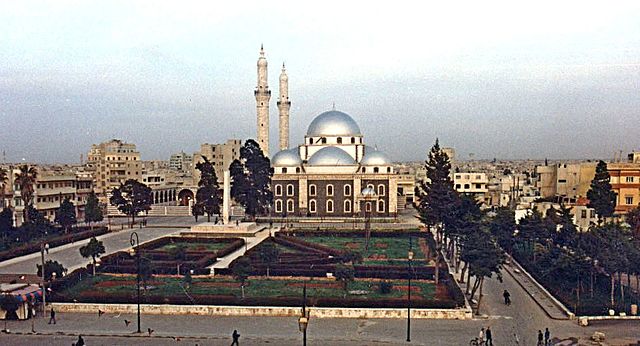Abd al-Rahman ibn Khalid ibn al-Walid was the governor of Homs under caliphs Uthman and Mu'awiya I. During Mu'awiya's governorship of Syria (639–661), Abd al-Rahman commanded a number of campaigns against the Byzantine Empire and defended the Upper Mesopotamian frontier from the Iraq-based forces of Caliph Ali. He fought reputably against the latter at the Battle of Siffin in 657 and continued his governorship of Homs and campaigns against the Byzantines after Mu'awiya became caliph in 661. His battlefield reputation and descent from his father, the prominent general Khalid ibn al-Walid, made him particularly popular among the Arabs of Syria. Mu'awiya ultimately perceived him as a potential rival of his own son Yazid, who he was grooming as his successor, which led the caliph to allegedly order Abd al-Rahman's poisoning in 666.
The Khalid ibn al-Walid Mosque in Homs, where Abd al-Rahman is believed to have been buried
Mu'awiya I was the founder and first caliph of the Umayyad Caliphate, ruling from 661 until his death. He became caliph less than thirty years after the death of the Islamic prophet Muhammad and immediately after the four Rashidun ('rightly-guided') caliphs. Unlike his predecessors, who had been close, early companions of Muhammad, Mu'awiya was a relatively late follower of Muhammad.
Sasanian-style silver dirham minted in Mu'awiya's name, c. 674
A statue representing Uqba ibn Nafi, the Arab commander who conquered Ifriqiya and founded Kairouan in 670, during Mu'awiya's reign. Uqba served as Mu'awiya's lieutenant governor over North Africa until the caliph dismissed him in 673.



